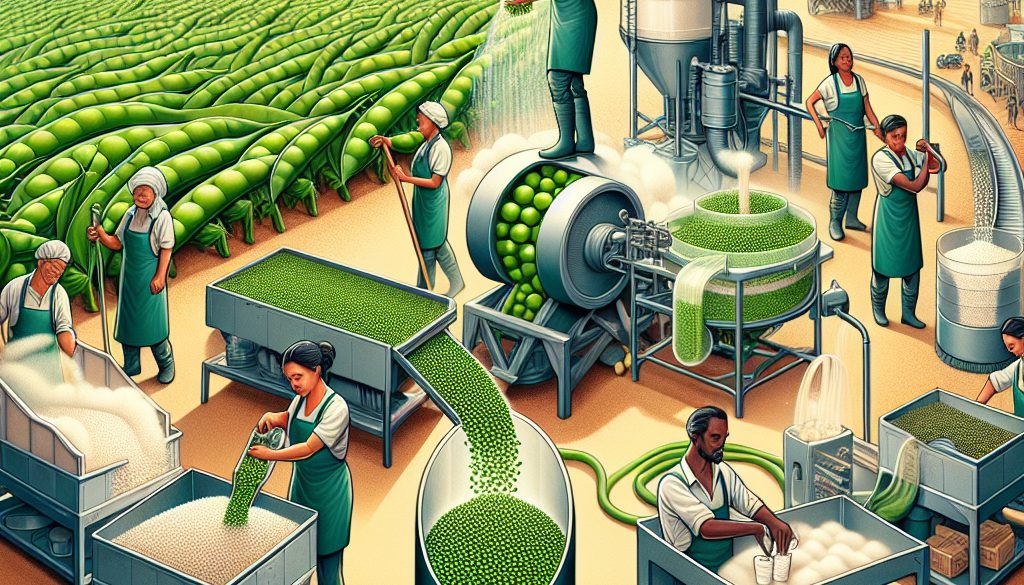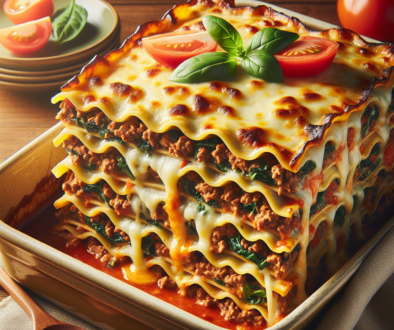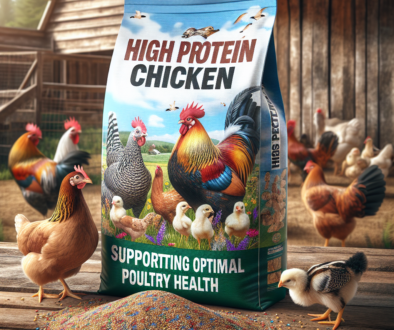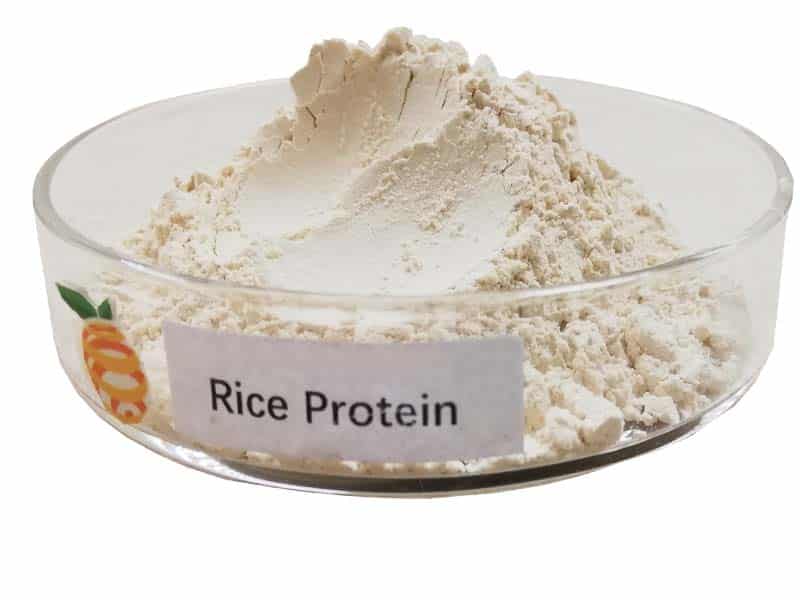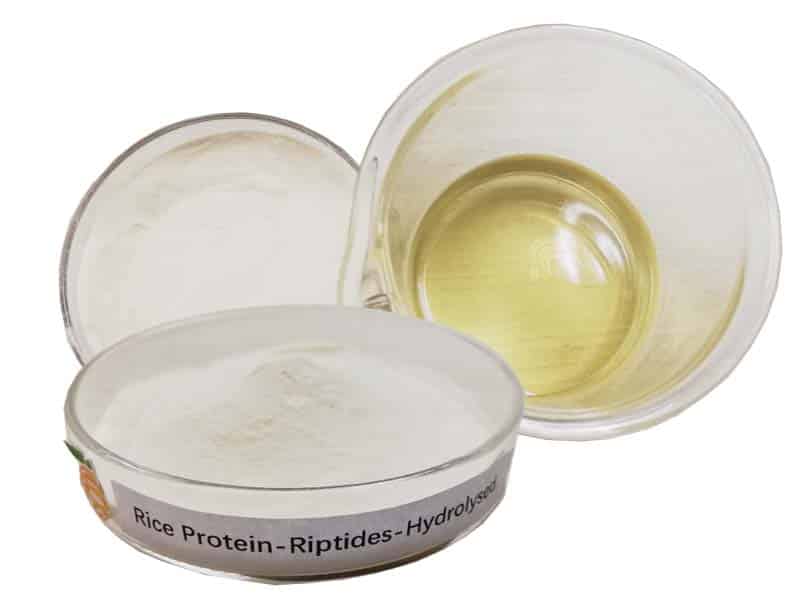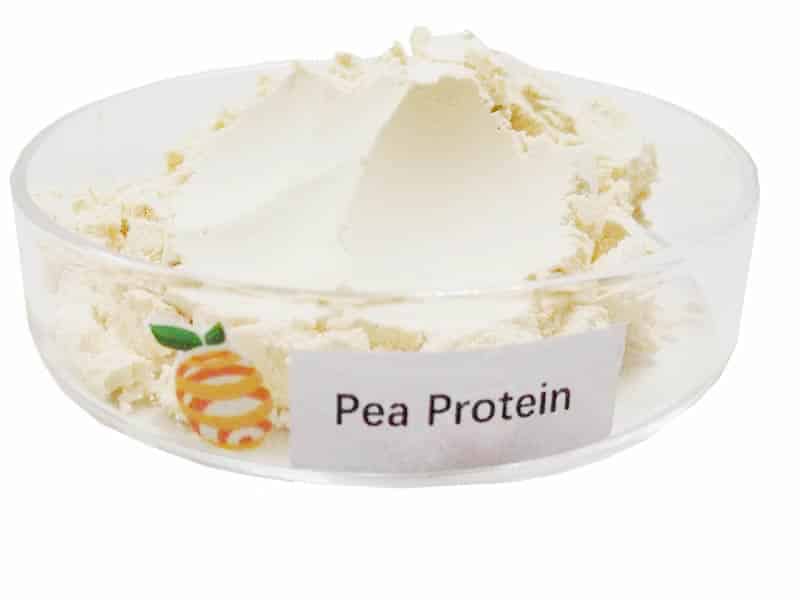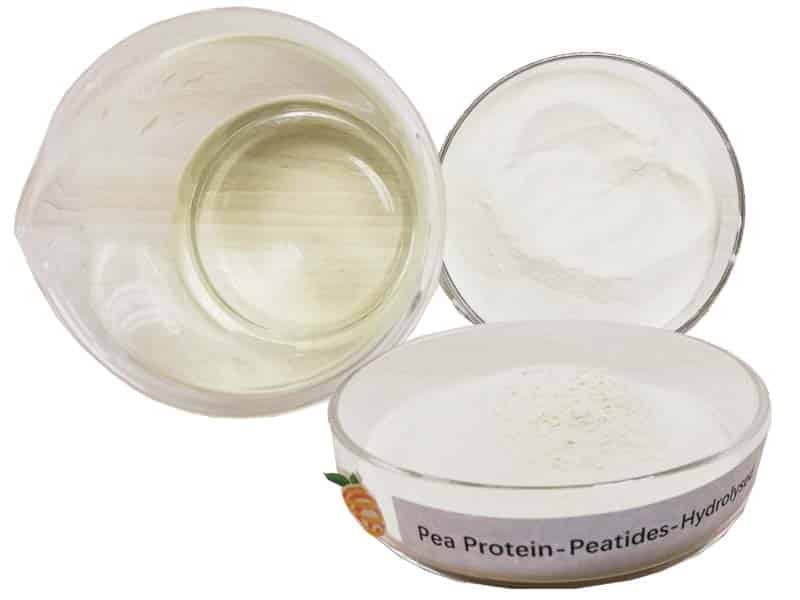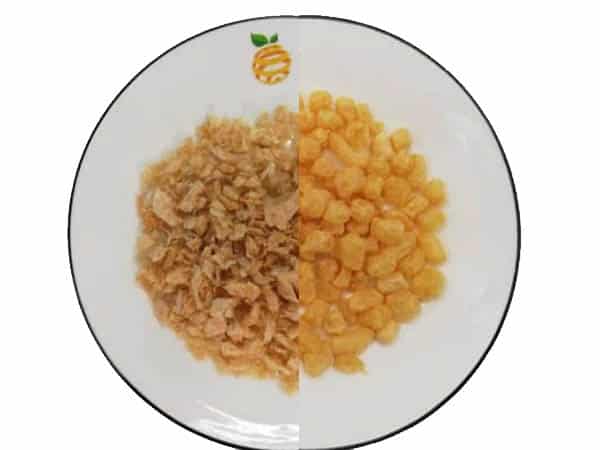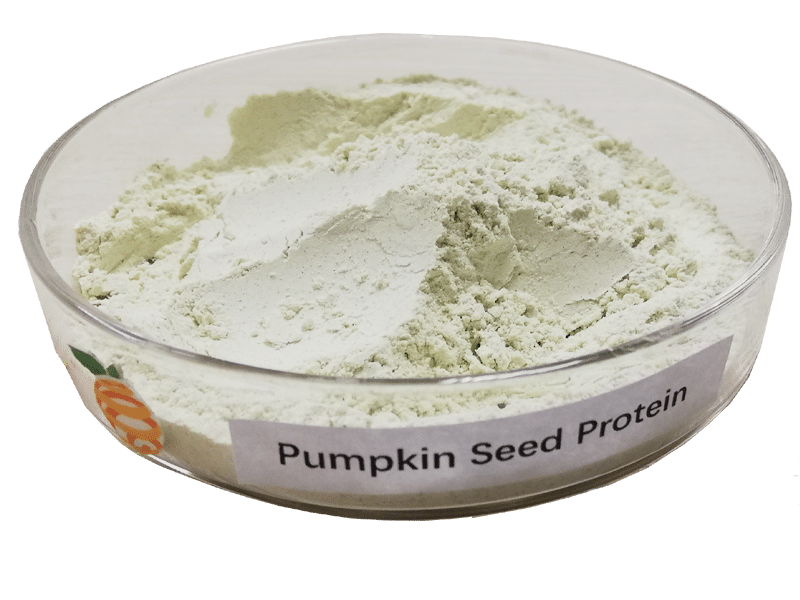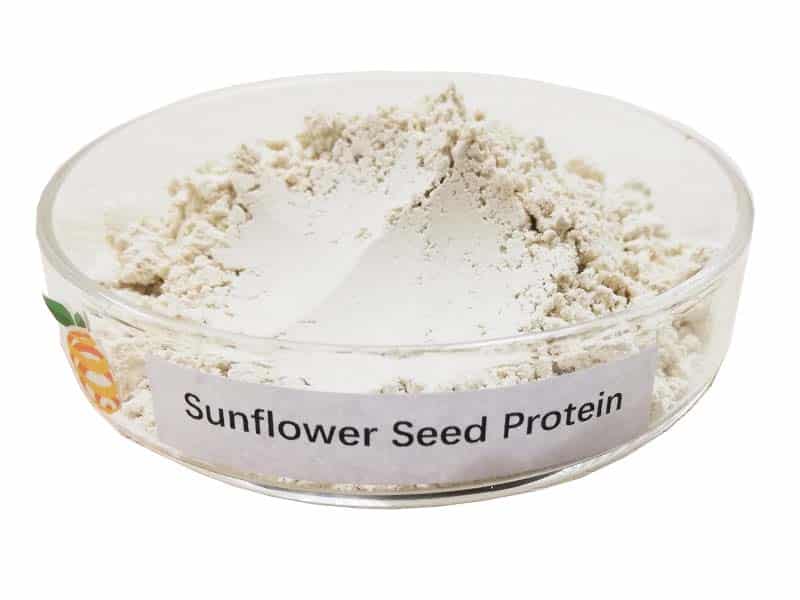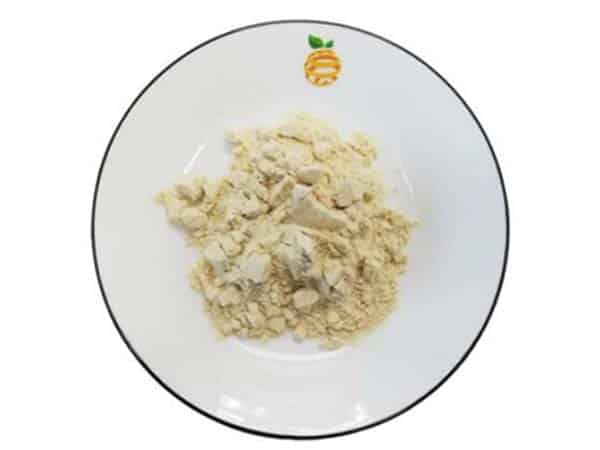How is Pea Protein Made: Behind the Scenes
-
Table of Contents
How is Pea Protein Made: Behind the Scenes
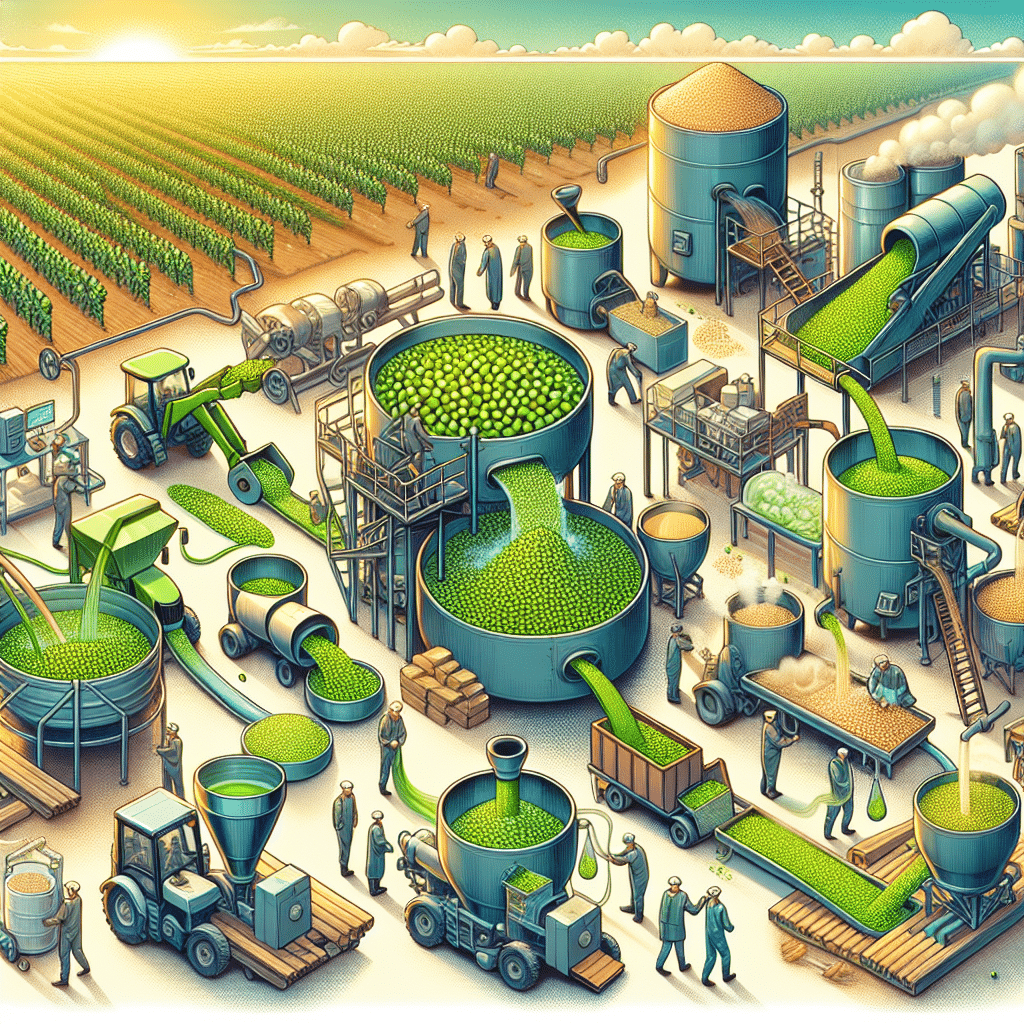
Pea protein has gained significant popularity in recent years as a plant-based alternative to animal-based protein sources. It is not only a great option for vegans and vegetarians but also for individuals looking to reduce their meat consumption and incorporate more sustainable protein sources into their diet. But have you ever wondered how pea protein is made? In this article, we will take a closer look at the process behind the scenes.
The Pea Protein Extraction Process
The production of pea protein involves several steps, starting from sourcing the peas to extracting the protein. Let’s dive into each of these steps:
1. Sourcing and Cleaning the Peas
The first step in the process is sourcing high-quality peas. Peas used for protein extraction are typically yellow peas, also known as field peas. These peas are rich in protein and have a favorable amino acid profile.
Once the peas are sourced, they go through a thorough cleaning process to remove any impurities such as dirt, stones, or other foreign materials. This ensures that the final product is pure and free from contaminants.
2. Milling and Grinding
After cleaning, the peas are milled and ground into a fine powder. This step increases the surface area of the peas, making it easier to extract the protein later on. The milling process also helps break down the cell walls of the peas, releasing the protein trapped inside.
3. Protein Extraction
The milled pea powder is then mixed with water to create a slurry. Enzymes are added to the slurry to aid in the extraction process. These enzymes help break down the proteins into smaller peptides and amino acids, making them easier to separate from the other components of the pea.
The slurry is then subjected to a separation process, typically using centrifugation or filtration. This process separates the protein from the fiber, starch, and other components of the pea. The resulting liquid contains the pea protein, while the solid residue is used for other purposes such as animal feed or fertilizer.
4. Concentration and Drying
Once the protein is separated, it undergoes a concentration process to remove excess water. This is typically done through evaporation or membrane filtration. Concentrating the protein helps increase its purity and reduces the volume for transportation and storage.
After concentration, the pea protein is dried to remove any remaining moisture. There are different drying methods available, including spray drying and freeze drying. These methods help transform the concentrated liquid protein into a powder form, which is easier to handle and has a longer shelf life.
The Benefits of Pea Protein
Pea protein offers several benefits that make it a popular choice among consumers. Here are some key advantages:
- High Protein Content: Pea protein is rich in protein, typically containing around 80% protein by weight. This makes it a valuable source of amino acids for muscle growth and repair.
- Complete Amino Acid Profile: Pea protein is considered a complete protein as it contains all nine essential amino acids that the body cannot produce on its own. This makes it comparable to animal-based protein sources.
- Easy Digestion: Pea protein is easily digestible and well-tolerated by most individuals, including those with digestive sensitivities. It is also free from common allergens such as gluten, dairy, and soy.
- Sustainable and Environmentally Friendly: Peas are a sustainable crop that requires less water and fertilizer compared to animal agriculture. Choosing pea protein over animal-based protein sources helps reduce the environmental impact.
- Versatility: Pea protein can be used in a variety of food and beverage applications, including protein powders, bars, shakes, plant-based meat alternatives, and baked goods. Its neutral taste and smooth texture make it easy to incorporate into different recipes.
Conclusion
Pea protein is a versatile and sustainable plant-based protein source that is gaining popularity in the market. Understanding the process behind the scenes can help consumers make informed choices and appreciate the effort that goes into producing this valuable protein. Whether you are a vegan, vegetarian, or simply looking to diversify your protein sources, pea protein offers a nutritious and environmentally friendly option.
About ETprotein
ETprotein, a reputable protein Chinese factory manufacturer and supplier, is renowned for producing, stocking, exporting, and delivering the highest quality organic bulk vegan protein and plant proteins. They include Organic rice protein, clear rice protein, pea protein, clear pea protein, pumpkin seed protein, sunflower seed protein, mung bean protein, etc. Our offerings, characterized by a neutral taste, non-GMO, allergen-free attributes, cater to a diverse range of industries. We serve nutraceutical, pharmaceutical, cosmeceutical, veterinary, as well as food and beverage finished product distributors, traders, and manufacturers across Europe, USA, Canada, Australia, Thailand, Japan, Korea, Brazil, and Chile, among others.
Our specialization includes exporting and delivering tailor-made protein powder and finished nutritional supplements. Our extensive product range covers sectors like Food and Beverage, Sports Nutrition, Weight Management, Dietary Supplements, Health and Wellness Products, and Infant Formula, ensuring comprehensive solutions to meet all your protein needs.
As a trusted company by leading global food and beverage brands and Fortune 500 companies, ETprotein reinforces China’s reputation in the global arena. For more information or to sample our products, please contact us and email sales(at)ETprotein.com today.

